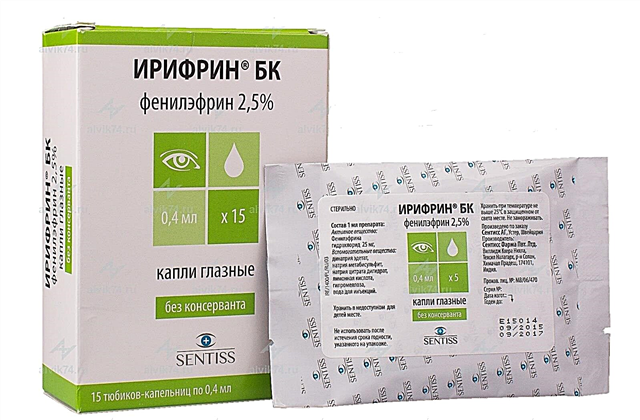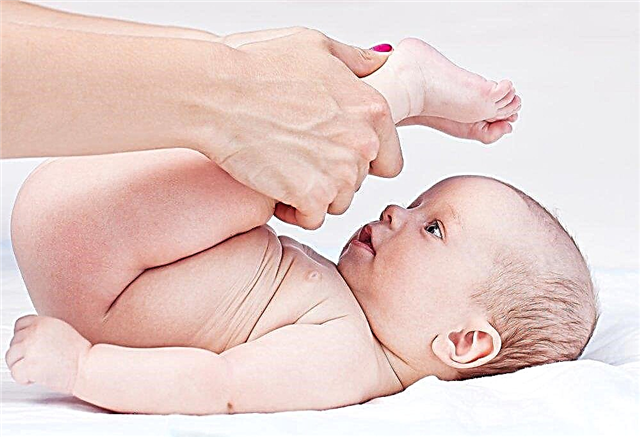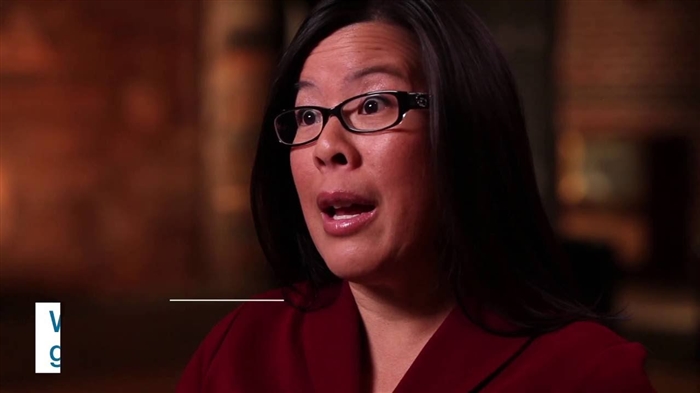The size of the baby's head is the most important indicator of the baby's health. All necessary measurements are carried out without fail as part of a monthly preventive examination by a pediatrician. You can also measure the diameter of a child's skull at home. This article will discuss how to correctly determine the size of the skull, why it is needed, what are the growth rates for boys and girls, how to choose the right headdress for a baby.

The size of the head of a small child must be determined every month.
Why know the volume of the head
From the moment a child is born, those around him can observe how his growth and development take place. Literally everything undergoes changes: weight, height, external features, including the size of the head circumference.
The diameter of the baby's skull is the most important parameter that indicates the correct growth and development of the child. Based on the data obtained, it is possible to understand how the brain of the baby grows, how the intracerebral fluid circulates, and so on.
The child's head takes on a rounded shape at 3-4 weeks after birth, the size of the circle is determined by several factors:
- Due date;
- Baby growth;
- Baby weight;
- Other personality traits;
- Heredity.
Important! In normal development, the diameter of the skull should not exceed the circumference of the chest. These values approach each other when the child reaches 3-4 years old. In the early stages of development, the increase in breast volume occurs faster than the growth of the head. The normal result of measuring the circumference of the skull varies between 29-34 cm. If the obtained data deviate greatly from the norm, the reason for this may be a serious pathology.
Why is head measurement important?
Inconsistency of head measurement results with medical standards may indicate violations in the process of skull development. This symptom is often the result of a serious illness or becomes its immediate cause.
Pathologies of this kind include the following:
- Rickets;
- High intracranial pressure;
- Hydrocephalus;
- Microcephaly;
- Craniostenosis.
Head size alone is not enough to make an accurate diagnosis. In such cases, it is necessary to undergo a full comprehensive examination, including tests, consultation with a neurologist, and so on.
Therefore, upon discovering the discrepancy between the obtained data and medical standards, parents should not panic. Each child develops individually in accordance with its own schedule, and therefore the growth rate in each individual case may differ. The established figures are only the basis from which the doctor starts.

Signs of rickets
Important to remember! The indicators for premature babies are different, since the process of development of the body lags behind the normal growth of full-term babies to a certain extent.
The following signs are cause for concern for parents and the doctor:
- The child's head is too large, the forehead protrudes strongly forward. The veins are clearly visible - their outlines protrude significantly outward, the fontanel of the baby is convex. The listed symptoms may indicate hydrocephalus. To establish the truth, a number of tests and examinations (ultrasound, MRI) will be required. It is also necessary to measure the amount of fluid inside the skull.
Hydrocephalus can occur in premature babies, children with intrauterine hypoxia and babies who have experienced asphyxia are also susceptible to this condition. The result is an increase in the size of the head. With this disease, the size of the skull is equal to or greater than the volume of the chest. Babies with this diagnosis are seen by a neurologist. The doctor prescribes medications to improve GM nutrition, as well as diuretics. Children are also given general massage. The completed course of treatment completely eliminates the problem, and the babies develop normally without any negative consequences. However, if you start the situation, the sick baby will lag behind in mental development, learn to walk, talk, and so on late.
- The skull is small, underdeveloped, the forehead is low, small. These signs are accompanied by neurological disorders. The child also has premature fontanelle closure. In this case, there is reason to suspect microcephaly in the newborn.
- A decrease in size is also observed with chronic intrauterine fetal hypoxia (lack of oxygen entering through the placenta during gestation) and chronic nicotine intoxication (occurs if the mother smoked too much during pregnancy). The extreme degree of such conditions is expressed in the form of anencefolia - the absence of a head. This phenomenon is a consequence of genetic disorders or viral diseases, such as chickenpox and rubella, suffered by the mother during pregnancy. In order to identify the pathology in a timely manner, it is necessary to carry out an ultrasound of the fetus in the early stages of gestation.
- Often, a decrease in the size of the skull is observed with genetic pathologies. Other congenital defects are often associated with:
- Wolf sky;
- Cleft lip;
- Fused fingers or toes;
- Having extra fingers or toes.
In this case, observation by a geneticist is required. Treatment is aimed at eliminating the identified abnormalities (if possible).
- An increase in the size of the skull can occur in the case of endocrine disorders in the mother's body (for example, with hyperthyroidism or diabetes mellitus).
Interesting. Too large size of the baby's skull does not allow the birth to take place naturally, as the baby's head cannot pass through the birth canal. In such cases, a cesarean section is done.

Hydrocephalus in a newborn
During the first year of life, the growth and development of the child is very intensive - along with the indicators of height, weight, breast volume, the size of the baby's skull also increases rapidly. For 6 months, the head diameter grows by an average of 1.5 cm every 30 days. In the next six months, this parameter increases by half a centimeter every month. The growth rate of the head may vary from month to month for individual children. Such changes can be natural physiological in nature or pathological. In the first case, the changes do not go beyond the centile, that is, the averaged values.
Important! In order to identify developmental pathologies, the doctor must take into account not only the diameter of the skull, but also the volume of the child's chest. In the presence of diseases, the growth rate of the head circumference can significantly exceed the intensity of the increase in breast volume or, conversely, lag far behind it.
How to take measurements correctly
During the first year of life, the baby's head grows rather quickly. Every month, the pediatrician must examine the baby, and, in addition to the skull circumference, check the chest volume, height and weight of the newborn for compliance with medical standards depending on age. The head is measured using a measuring tape.
You can also find out the size of a baby's skull at home. This is done in the same way as at a doctor's appointment - using a tape-centimeter. When taking measurements, the tape is applied to the widest parts of the head: in front at a level just above the eyebrows and behind along the convex part of the back of the head.
The procedure includes the following steps:
- First you need to prepare a centimeter.
- Put the baby on a table or bed (if the baby has reached six months of age, then he can be in a sitting position).
- The tape should be applied to the back of the head so that it passes over the ears through the widest back of the head.
- The starting point of the centimeter is connected to the ending point. The intersection point should be above the eyebrows.
- The result is recorded.
- The data is compared with the norm.
The following recommendations will help you get more accurate results:
- To measure head circumference, use the same tape every month;
- You cannot squeeze the head of the crumbs, since the bones of the newborn are quite fragile;
- If during the procedure the baby is capricious, crying, it is better to postpone the attempt for now and repeat it a little later;
- Record data without rounding to the nearest millimeter;
- It is better to have a special notebook where measurement data will be recorded every month.

Measuring the diameter of the newborn's head
In order to determine the compliance of the results with medical standards, you can compare the data with the figures obtained from the following calculations:
- For children aged 1 to 6 months: 43 cm - 1.5 cm;
- For children who have reached six months: 43 cm + 0.5 cm.
Subtraction or addition is done taking into account the number of months that make up the age of the baby. An example for a 3-month-old baby: to calculate the required parameter, you need to subtract 1.5 cm from 43 cm 3 times. The result will be 38.5 cm. In the same way, you can calculate the diameter of the baby's head at any age up to a year.
On a note. This calculation is approximate. To find out which parameters are the most correct, you can use the growth tables of the skull circumference.
Head circumference growth charts
To find out if the obtained head measurement result is normal, you can refer to the tables of the baby's head circumference by month. It is important to remember that the data indicated in them is valid only for full-term babies. For babies born prematurely, there are separate methods and rules for measuring the diameter of the head.
During the first year of life, the diameter of the baby's head increases by 11-12 cm; in one-year-old children (12-18 months), the fontanel is already completely fused. Control for checking the size of the skull are 3 and 6 months.
Below will be presented the so-called centile tables for boys and girls separately. They indicate the average values of the parameters of head growth in different periods of a child's life before he turns one year old.
Head circumference for girls

Head circumference table for girls under the age of one year
Boys Size Chart

Head circumference table for boys under the age of one year
The difference between girls and boys
At birth at term, boys and girls have almost the same cranial volumes - on average 34-35 cm. Gradually, in the process of development, the diameter of the boys' heads becomes slightly larger, compared with the same indicator for girls.
Ratio with labeling on the cap
It is better to buy a hat with a child - by trying on clothes, parents will be able to choose the right width and depth of the product. But taking the baby with you to the store is not always possible. In such cases, you should be guided by the age parameters from the table and correlate them with the markings on the cap.
Actions when choosing a headdress should be as follows:
- Pay attention to the product label. The size of the item indicated there corresponds to the diameter of the baby's head.
- Domestic manufacturers make hats according to a standard dimensional grid, each value in which differs from the previous one by 1 cm (in rare cases by 2 cm, then you need to choose a larger one).
- If the label says double the size, it means the fabric stretches well. This option is universal and suitable for several ages.
- Lightweight products have double markings in the form of a fraction, the first number of which indicates the diameter of the head, and the second - the height of the baby.
- To correctly interpret the marking of foreign products, you need to study the corresponding size table.
On a note. If someone in the family is engaged in knitting, then a hat should be made with knitting needles in accordance with a recently taken measurement. If the process takes more than a month, then a couple of centimeters must be added to the length and width of the product.
The size of the child's head by age is the most important indicator of the normal growth and development of the baby. If there are deviations from the norm, it is recommended to show the baby to the doctor.



